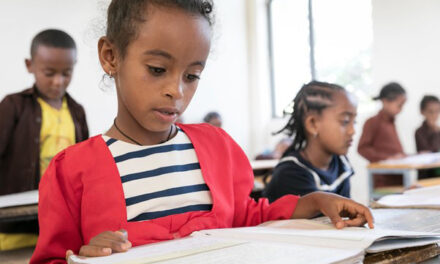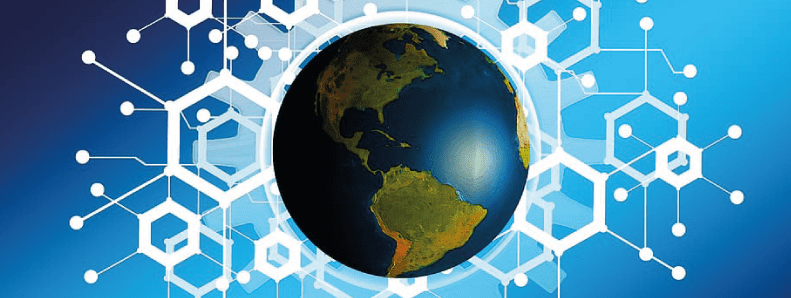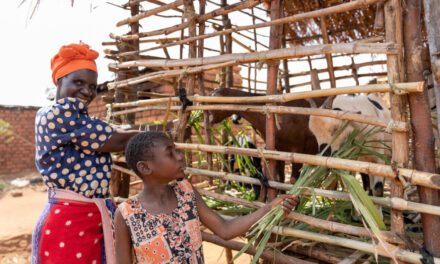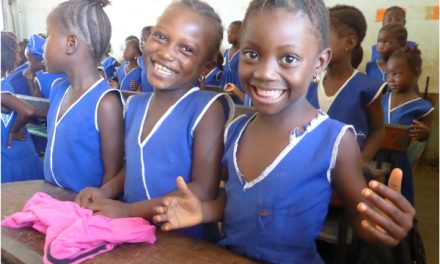This blog was written by Damaris Seleina Parsitau, Senior Lecturer at Egerton University, Kenya and Evelyn Jepkemei, Education Advisor, World University Service of Canada. It was originally published on the Brookings Education Plus Development website on 6 May 2020.
On March 15, 2020, the Kenyan government abruptly closed schools and colleges nationwide in response to COVID-19, disrupting nearly 17 million learners countrywide. The social and economic costs will not be borne evenly, however, with devastating consequences for marginalized learners. This is especially the case for girls in rural, marginalized communities like the Maasai, Samburu, Turkana, Pokot, Marakwet, and Sabaot, and in coastal regions; refugee children in Kakuma and Dadaaab refugee camps; and children with disabilities.
Education exclusion
Since schools closed in Kenya, the ministry of education and other agencies have indicated that learners should undertake online learning or technology-mediated learning on TV, radio, ed-tech apps, and mobile phones.
While such learning may take place in urban areas, for many marginalized children in remote villages—including refugee children in camps as well as those living with various disabilities—learning during COVID-19 school closures is a deep challenge. Learning mediated through ed-tech remains out of reach for many disadvantaged children due to connectivity challenges. In remote parts of Kajiado, Narok, Samburu, Turkana, and Kilifi counties, for example, electricity does not reach households, excluding children from online learning.
Additionally, smartphones are beyond the reach of most rural communities. Even when adults have smartphones, tensions around privacy and kids’ unsupervised internet use render access for learning nonexistent. And where electricity and technology do exist, the cost of the internet is prohibitive. Such disadvantages present challenges for rural families and learners who must compete with their more privileged peers during national examinations.
Learning loss
The quarantines and curfews imposed by governments as a response to the COVID-19 pandemic also lead to learning loss. If children experience learning loss during normal extended school holidays, it remains to be determined how much learning will be lost during extended emergency closures.
For rural children of parents with low literacy levels and limited education resources, this risk of learning loss is heightened. Not only are these parents frustrated at having to homeschool without adequate preparation, they also cannot reinforce their children’s learning. Intermittent online learning is not effective for students already behind, and radio learning cannot replace classroom learning as it is intended to supplement knowledge that children already have.
Nutrition and economic consequences
School closures also have implications for learners who rely on school feeding programs as a main source of nutrition. With everyone now at home, families’ ability to provide food for their children has been even further reduced. In such poverty, securing food takes precedence over learning.
For instance, the closure of schools in Kenya has also coincided with the planting seasons where poor families are likely to take advantage of labor provided by children at home. This is especially the case for girls and young women whose duties include working on farms, household chores, and caring for family members.
Sexual violence and exploitation
Anecdotal evidence suggests that rural girls are likely to be used to cushion families’ income, which further exposes girls to sexual exploitation and gender-based violence. This places girls at especially high risk of health and reproductive crises, including forced female genital mutilation, as well as early marriage, which puts girls at high risk of dropping out when schools reopen.
Decreased mobility from quarantines and curfews also restricts girls and women from essential protection services and support networks, further diminishing their autonomy.
Conclusion
While COVID-19 has affected nearly all learners globally, school closures have exacerbated already existing inequalities for marginalized learners and come with a host of unintended consequences for vulnerable girls. We must put in place protections for vulnerable girls and ensure that they have access to life-saving education.






An insightful article, thank you. But, also boys are currently disadvantaged and vulnerable in the marginalized areas in Kenya. Hence have a feeling that any comprehensive remedial or mitigation measures should be gender learner inclusive.
Thank you for your comment, Isaiah. As you know, in the marginalized regions in Kenya, especially in the Arid and Semi-Arid Lands and informal urban settlements, populations are deprived of necessary opportunities for development. It is true that in such areas both boys and girls need support. Women face what I consider double marginalization because the traditional place of women in society is also relegated in the social hierarchy. Universally, there are clear patterns of women’s inferior access to resources and opportunities in society and this is compounded when they happen to live in geographically marginalized areas.